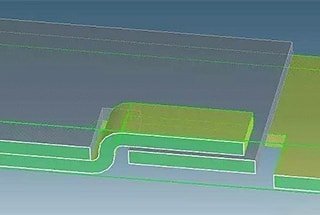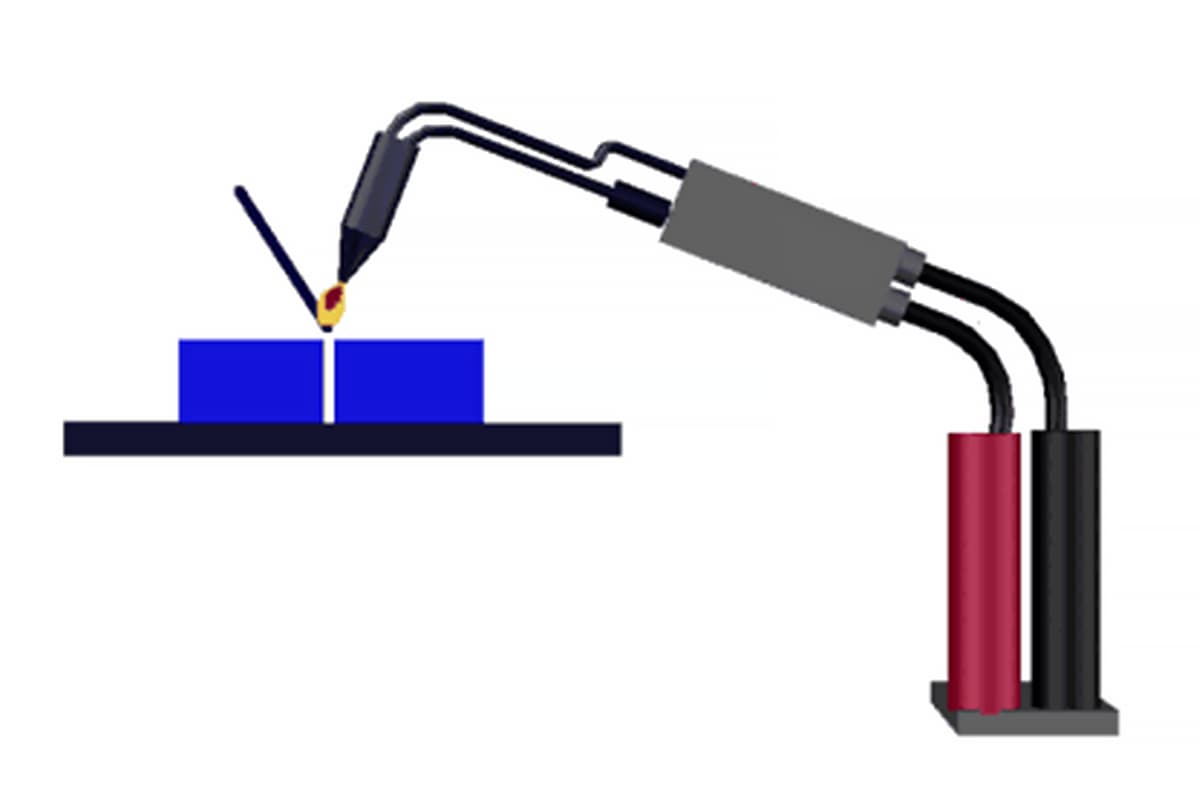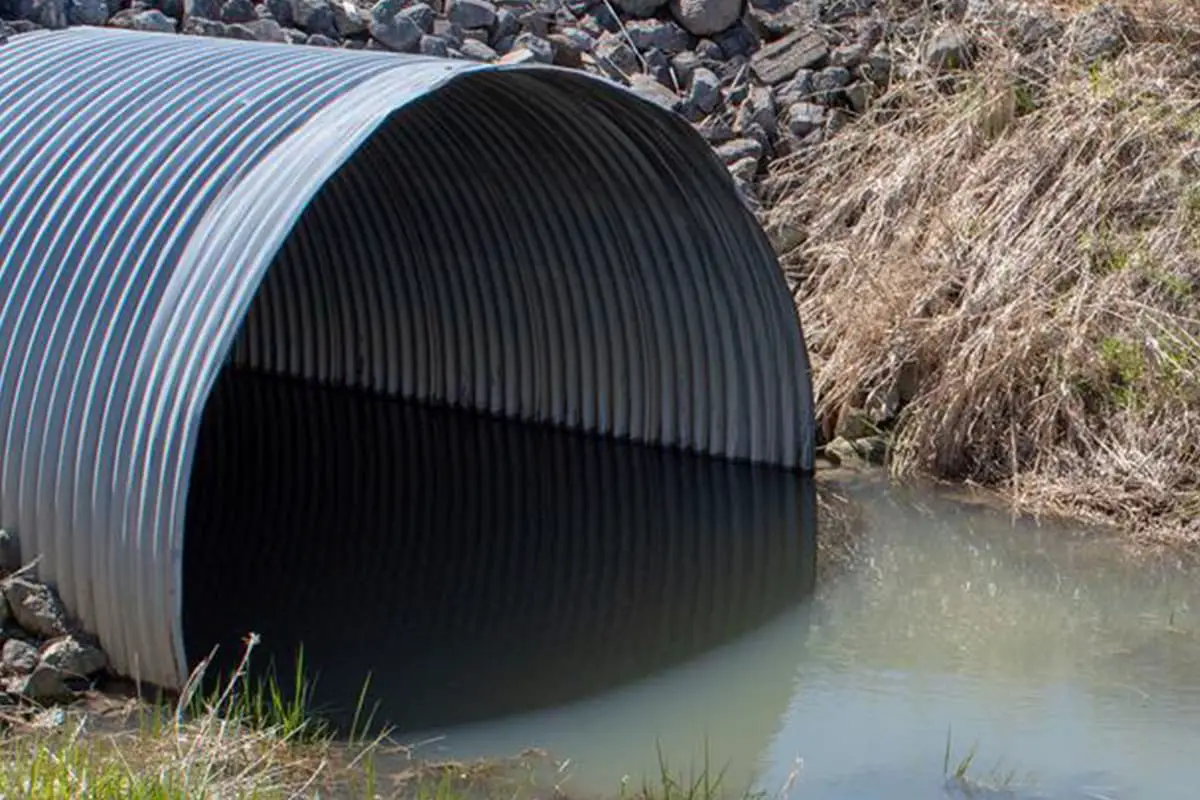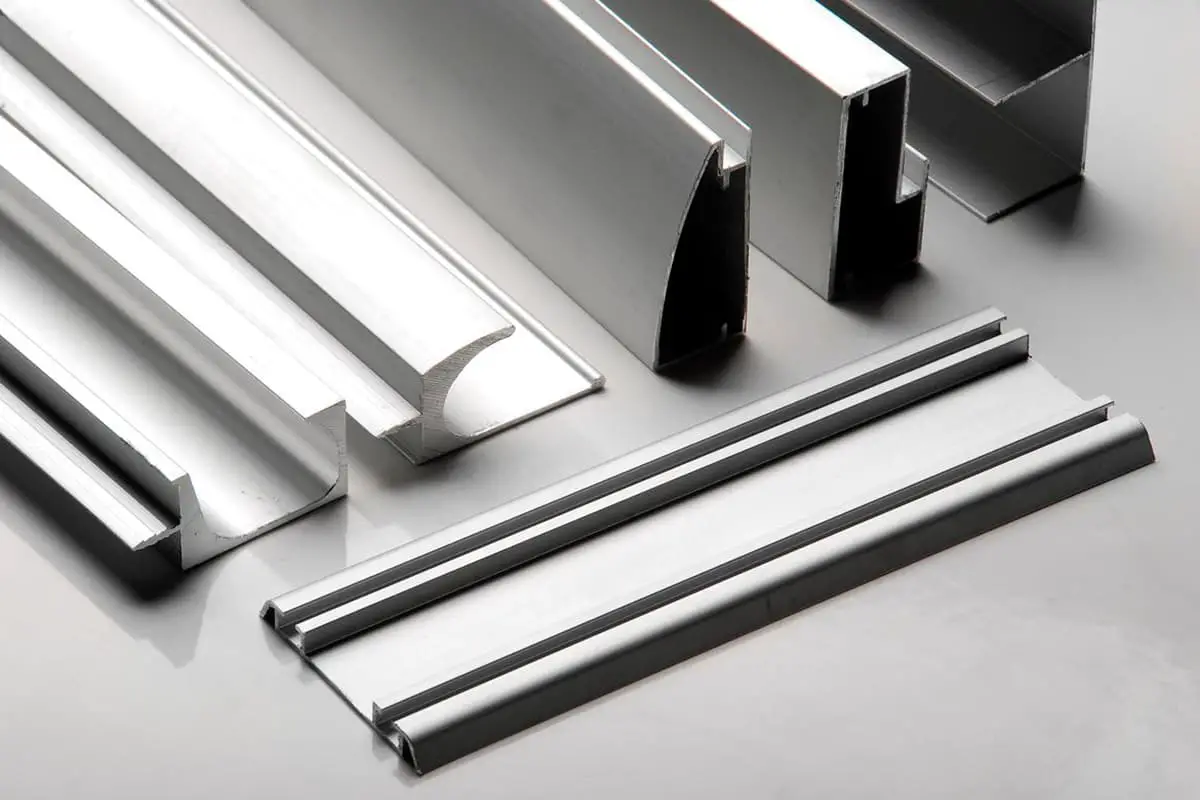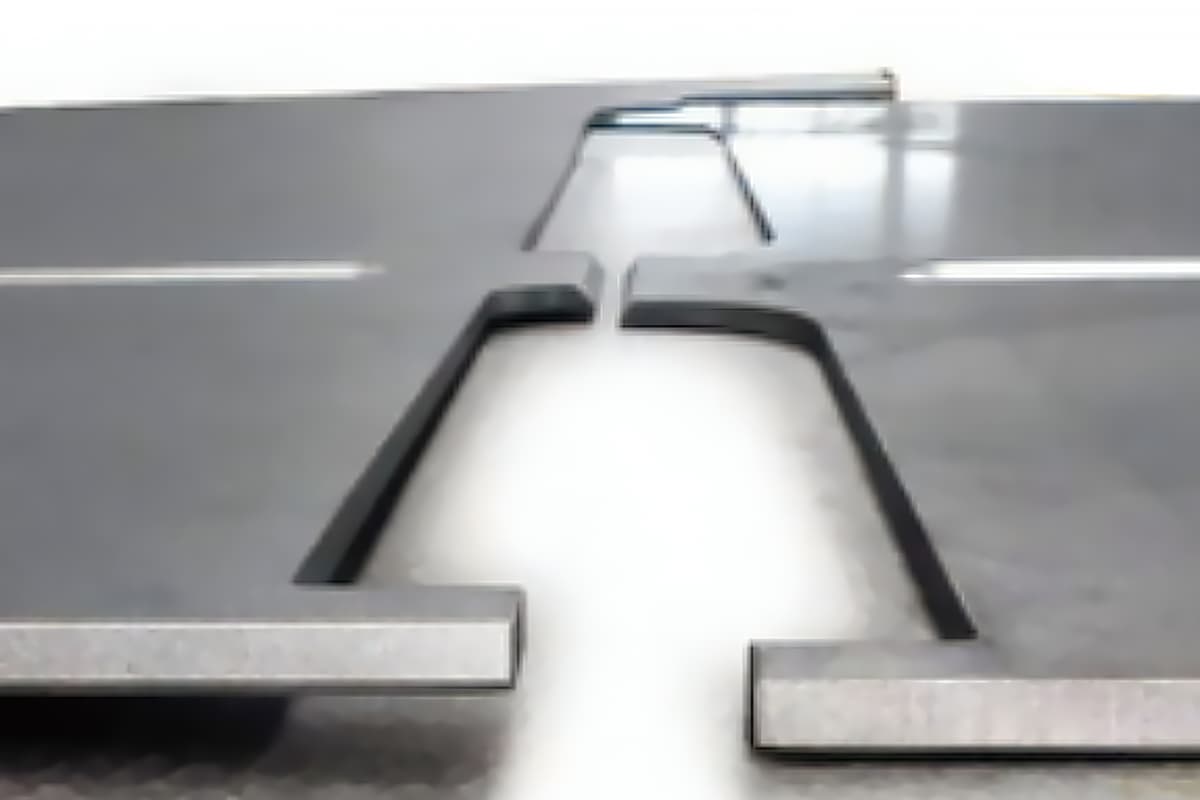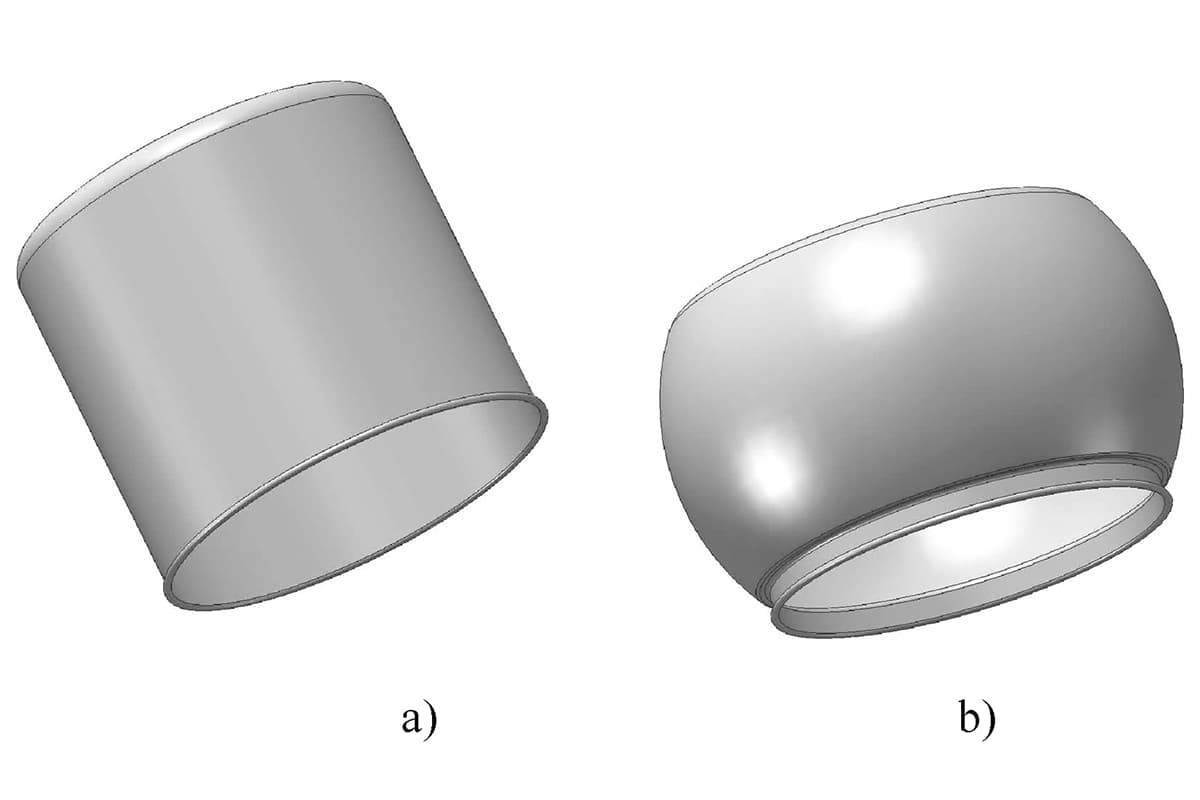
Ever wondered how the backbone of modern data centers stays organized and efficient? This article explores the fascinating world of 19-inch server racks and cabinets, detailing their origins, types, and specifications. Discover how these essential components keep our digital world running smoothly and what makes them so crucial for both office and industrial use.
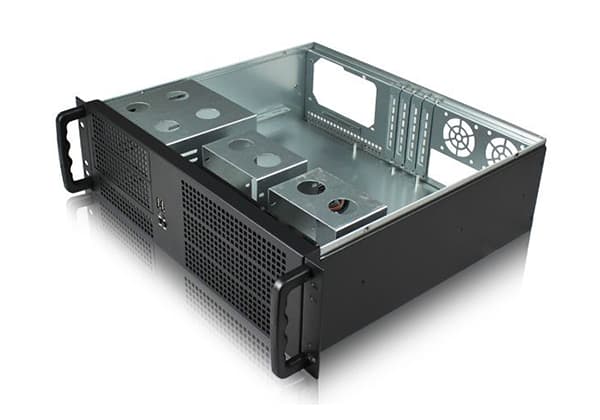
A 19″ server rack generally refers to equipment installed in a 19″ cabinet or rack. The difference between a cabinet and a rack is that a cabinet has a protective shell and top and bottom covers, while a rack does not.
Racks, distinct from cabinets, are often referred to as “frames.” Both have a rectangular shape. The 19″ server chassis is designed to fit inside a cabinet, taking on a rectangular shape and adhering to specific height limitations so that chassis produced by different manufacturers can fit into cabinets designed to the same specifications.
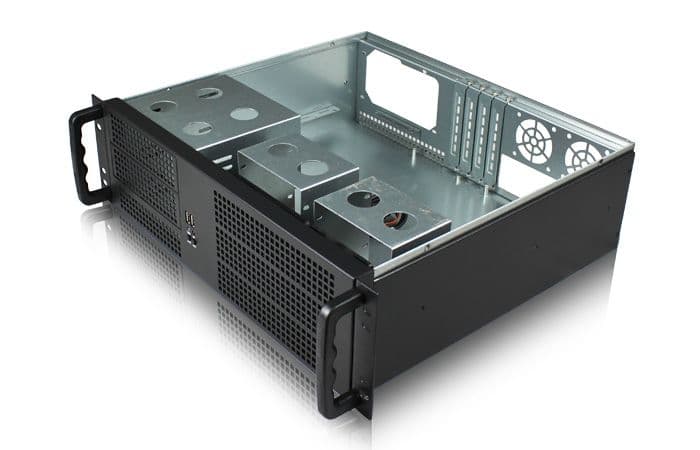
Originally, 19″ server racks and cabinets were a standard for US military electronic control instruments. The purpose of this standard was to unify the dimensions of these devices and facilitate their quick assembly, replacement, and maintenance. Eventually, this standard was adopted by the civilian sector, becoming widely used in the business world.
3-1- The advantages of cabinets include providing protection for server racks and facilitating expansion. They were initially used for industrial control systems, but in recent years, due to the development of networks, they have been increasingly used for network communication equipment.
Therefore, their product types can be broadly divided into two main categories: office-use and industrial-use products.
3-2- Office-use products
3-3- Industrial-use products
Cabinets are not merely boxes as their name suggests; they come in various shapes, as shown in the three figures below. These cabinets are all HP products, but their appearance and dimensions vary depending on the operating environment.
All cabinets are manufactured according to relevant specifications, with defined widths, heights, and depths covered in the IEC-60297 and EIA-310 series. The two specifications define the height unit as U (1U = 1.75″ = 44.45mm), the width as 19″ (other width specifications exist, but 19″ is the most common), and the depth has some variation.
1-1- Definition of height unit U: 1U = 1.75 inches = 44.45mm. Cabinets use U as the basic unit, so a 35U cabinet can accommodate a total height of 35U worth of server racks, but the cabinet’s overall height is not 35U.
1-2- The definition of the 19-inch (482.6mm) width refers to the maximum visible width of the server rack when viewed from the front, which is usually the width of the mounting flanges on either side of the server rack, not the width of the cabinet itself. The width of 19″ cabinets is limited by the server rack dimensions, almost always exceeding 500mm (since 19″ server racks are around 483mm wide). Current market cabinet widths range from 500mm to 800mm, with some special specifications exceeding 1000mm, but the most common is a 600mm wide cabinet.
1-3- Although there are regulations for cabinet depth, they are rarely mentioned, as they do not limit server rack designs like height and width. Even short server racks can be used in long cabinets, as long as their design specifications are fully compliant. Cabinet manufacturers produce various depth specifications, with 600mm, 700mm, and 800mm deep cabinets being the most commonly used (depth refers to the cabinet’s external depth, excluding handles).
2-1- External dimensions: Server rack design is constrained by cabinet size, so designers must consider the following points:
2-1-1- In terms of height: Since height is measured in U, with 1U equal to 1.75″ or 44.45mm, a 1U server rack cannot exceed 44.45mm in height. To facilitate stacking and assembly, the height is typically designed to be less than 44mm. Similarly, the actual height of server racks with different U values will be slightly less than their U value, allowing a gap between each server rack in the cabinet to facilitate assembly and disassembly.
2-1-2- In terms of width: 19″ cabinets have sheet metal (or aluminum rectangular) columns at each corner to support the cabinet and secure the server rack, so the internal width available for server racks is only around 450mm (approximately 17.7″), not the full 19″ width. To account for assembly, server rack width cannot be set to 450mm and usually does not exceed 440mm, leaving a 5mm gap on either side. If slide rails are considered for easy assembly, maintenance, and disassembly, the server rack width must be reduced further. Common slide rail thicknesses range from 10 to 20mm, and both sides need rails, so the server rack width becomes even narrower after accounting for double the thickness.
2-1-3- In terms of depth: Depth considerations include the need for server racks within cabinets to have space for heat dissipation, cable management, and other component arrangements. Since the space on either side is limited, designers must utilize the front and rear spaces. Typically, there is at least 75mm of space at both the front and rear (depending on the mounting bracket location). Therefore, for a 600mm cabinet, it is best to design server racks with a depth of less than 450mm.
2-2- Cabinet Mounting Holes: Server racks must be secured on both sides when placed in a cabinet, with mounting holes usually located on the mounting flanges. The dimensions and positions of these holes are shown in the figure below (data source: EIA-310-D). The figure shows three dimensions for width, each with three numbers. The top layer of dimensions is the standard size for 19-inch cabinets (i.e., 450, 465, and 483.4). The three dimensions represent the following:
450mm – Maximum width a server rack can occupy within the cabinet. 465mm – Distance between the mounting holes on the server rack and cabinet. 483.4mm – Maximum allowable width between the mounting flanges on the server rack.
31.8mm – Distance between the two mounting holes within a 1U height. If there are three mounting holes within a 1U height, the distance between the holes is half of 31.8mm, which is 15.9mm.
12.7mm – Closest distance between mounting holes of two adjacent U units, specifically, the distance between the bottom hole of the upper U and the top hole of the lower U. The junction between 1U and 1U is located in the middle of the 12.7mm distance.
6.75mm – Distance between the top (or bottom) mounting hole of the server rack and the inside top (or bottom) of the cabinet.
2-3- Front Handles: Server racks are pushed in and pulled out from the front, so handles are often designed on the front sides of the server rack for ease of operation. When designing handles, care must be taken to avoid interfering with the screw mounting holes for assembling the server rack and cabinet, as these holes are also located on the sides of the server rack.
2-4- Foot Pads: Some server racks are designed to operate independently outside the cabinet, so their bases are often equipped with foot pads. This prevents damage to surfaces when placed on a table or desk. However, when installing the server rack in a cabinet, the foot pads may interfere with the server rack below. As a result, it is preferable to design foot pads that can be easily removed and reinstalled.
The standard cabinet we commonly see is the 19-inch standard cabinet. Nowadays, most engineering-grade equipment panel widths use the 19-inch size specification. As a result, the 19-inch cabinet has become a natural standard cabinet.
Regarding the standard cabinet, we know that its structure is not very complicated, typically consisting of the basic cabinet structure, internal support system, and power supply and cooling system components.
The purpose of standardizing server dimensions is to ensure that the server maintains the appropriate size to be placed on a metal or aluminum rack. The rack has screw holes for securing the server, aligning with the server’s screw holes, and then securing it with screws to facilitate the required space for each server.
The standard dimensions for a server are its width (48.26cm = 19 inches) and height (a multiple of 4.445cm). Since the width is 19 inches, sometimes a rack that meets this standard is also called a “19-inch rack.” The thickness is based on a unit of 4.445cm, with 1U equal to 4.445cm.
The specific dimensions and size standards are shown in the chart below:
19-inch Standard Cabinet Dimensions
| Item | Type | Size/mm |
|---|---|---|
| Standard Cabinet | 18U | 1000X600X600 |
| 24U | 1200X600X600 | |
| 27U | 1400X600X600 | |
| 32U | 1600X600X600 | |
| 37U | 1800X600X600 | |
| 42U | 2000X600X600 | |
| Server Cabinet | 42U | 2000X800X800 |
| 37U | 1800X800X800 | |
| 24U | 1200X600X800 | |
| 27U | 1400X600X800 | |
| 32U | 1600X600X800 | |
| 37U | 1800X600X800 | |
| 42U | 2000X600X800 | |
| Wall-mounted Cabinet | 6U | 350X600X450 |
| 9U | 500X600X450 | |
| 12U | 650X600X450 | |
| 15U | 800X600X450 | |
| 18U | 1000X600X450 |
42U cabinet dimensions
The 42U cabinet dimensions are actually quite similar to the standard 19-inch cabinet, with the only difference being the height, which is 42U. The height of the equipment installed in a 19-inch standard cabinet is expressed in a special unit called “U”, where 1U equals 44.45mm.
The equipment panels of devices that use 19-inch standard cabinets are usually made according to the nU standard. For a 42U cabinet, the available internal space is 42U, allowing you to choose the cabinet size based on the number of devices you have.
Totem cabinets offer 18U, 22U, 27U, 32U, 37U, 42U, and 47U options for you to choose from.
How are the dimensions of a cabinet defined? Let’s take a look at a more detailed introduction below, hoping it will help when selecting a cabinet.
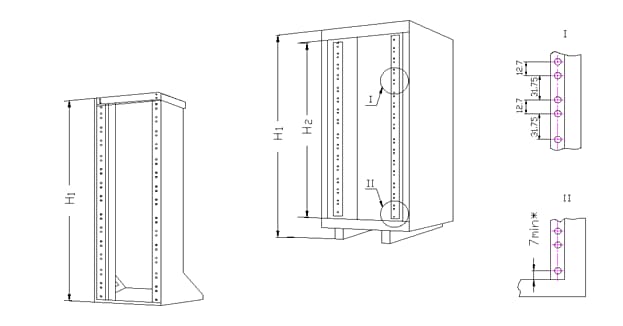
The dimensions of the height H1 series can be seen in the table below:
| H1 | 600 | 800 | 1000 | 1200 | 1400 | 1500 | 1800 | 2000 | 2200 | 2600 |
| H2 | 9U | 13U | 18U | 22U | 27U | 31U | 36U | 40U | 450 | 54U |
Note: In the table, 1U = 44.45mm. When there is no requirement for combined cabinets, H1 is the reference dimension.
Server Cabinet Dimensions Explained:
When we talk about a server’s “U,” it is a unit that represents the external dimensions of the server. It is an abbreviation for “Unit” and is determined by the American Electronics Industry Association (EIA) as an industry standard. The purpose of standardizing server dimensions is to ensure that servers maintain proper dimensions to fit on iron or aluminum racks.
The standard dimensions for a server are its width (48.26cm = 19 inches) and height (multiples of 4.445cm). Because the width is 19 inches, the racks that meet this standard are also called “19-inch racks,” which is the width of a rack-mounted server.
Choosing Server Cabinet Space Considerations:
Plan and list all the equipment to be installed in the cabinet and their accurate measurements: height, length, width, and weight. By summarizing the volume and space occupied by these devices, you will ultimately decide how tall the cabinet you will choose. Clearly, taller cabinets can hold more equipment and save space.
Maximizing the height of the cabinet is not the only consideration; the back of the cabinet also has a large area available for use. This is the reason for measuring cabinet depth. Choosing a deeper cabinet allows you to install two sets of equipment back-to-back and then install even more devices.
After calculating the cabinet space (in “U” or 1.75-inch units), consider the overall size of the cabinet. No one would want to find out they need to add more equipment shortly after filling the cabinet. Therefore, as a general rule, allow for an extra 20% to 30% in cabinet height for system expansion. This extra space also improves ventilation for the equipment.

